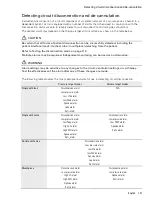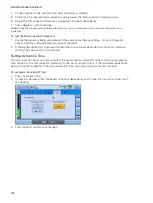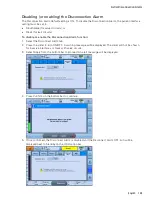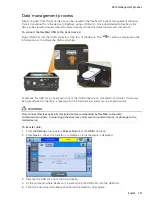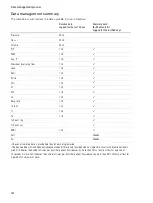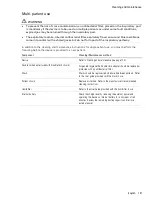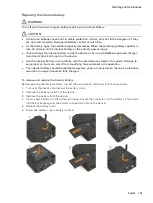
Detecting circuit disconnection and de-cannulation
English 121
Detecting circuit disconnection and de-cannulation
Inadvertent disconnection of a circuit component or accidental removal of a cannula poses a hazard to a
dependent patient. Astral is equipped with a number of alarms that when used in conjunction with the
Disconnection Alarm are able to reliably detect circuit disconnection (including de-cannulation).
The optimal alarm may depend on the therapy target and circuit type as shown in the table below.
CAUTION
Be certain that all forms of patient disconnection can be successfully detected, including the
patient interface (mask / tracheal tube / mouthpiece) detaching from the patient.
Refer to Testing the disconnection alarm on page 113.
Multiple alarms may be required. Independent monitoring can be used as an alternative.
WARNING
Alarm settings may be sensitive to any changes to the circuit, ventilation settings or co-therapy.
Test the effectiveness of the alarm after any of these changes are made.
The following table provides the most appropriate alarms for use in detecting circuit disconnection.
Pressure target modes
Volume target modes
Single with leak
Disconnection alarm
Low pressure alarm
Low Vte alarm
Low MVe alarm
Apnoea alarm
Leak alarm
SpO
2
alarm
N/A
Single with valve
Disconnection alarm
Low pressure alarm
Low Peep alarm
High Vti alarm
High MVi alarm
Apnoea alarm
SpO
2
alarm
Disconnection alarm
Low pressure alarm
Low PEEP alarm
Apnoea alarm
SpO
2
alarm
Double with valve
Disconnection alarm
Low pressure alarm
Low Vte alarm
Low MVe alarm
Apnoea alarm
Leak alarm
SpO
2
alarm
Mouthpiece
Disconnection alarm
Low pressure alarm
High Vti alarm
High MVi alarm
Apnoea alarm
SpO
2
alarm
Disconnection alarm
Low pressure alarm
Apnoea alarm
SpO
2
alarm
Summary of Contents for Astral 100
Page 1: ...Clinical guide English ...















